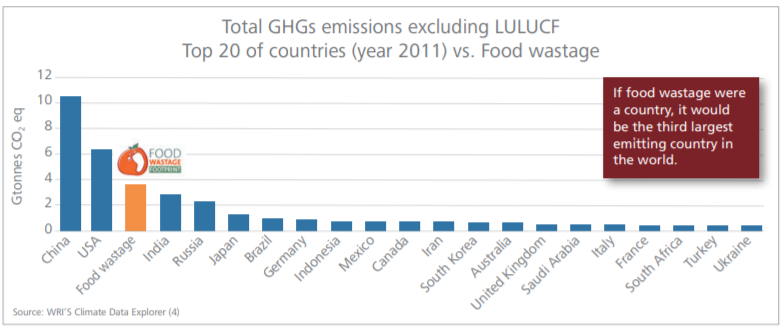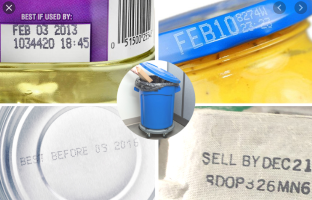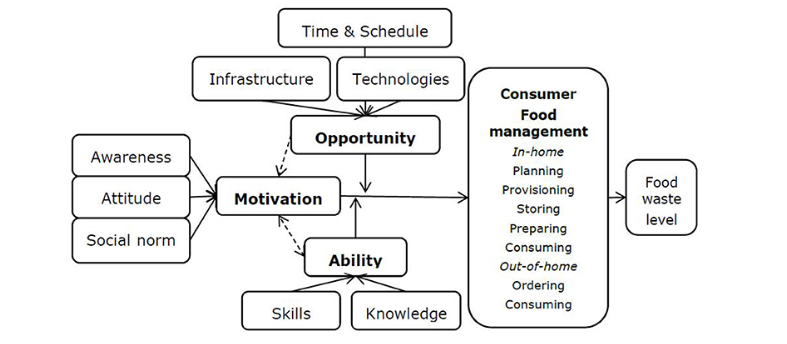Team C: Food Waste
Note/disclaimer: This webpage is for instructional purposes only and the scenario described below is fictional.
This page was developed as a hypothetical report written on the behalf of the Environmental Defense Fund
UW-Madison Task Force Members / Food Waste Consultants:Ryan Wenzel, Major in Food Science
JinSoo Park, Major in Biochemistry, Molecular Biology, Biology
Scenario | Abstract | Introduction | Methods | Results | Case Study | Limitations | Conclusions | Citations | Acknowledgements | About the Authors | About the Authors |
Scenario
Scenario
Food waste will only continue to become an increasing threat to the environment each year on various scales. Therefore, a non-profit environmental advocacy group, Environmental Defense Fund (EDF), has decided to fund a project primarily focusing on how the United States deals with food waste to obtain a better perspective and more information on new practices to reduce food waste. The project is expected to take action in Spring of 2020 with the intent of increasing the understanding that food waste has an impact on the environment and the economy. The project is set out to reach these three goals:
Identify specific plans, policies, and programs that help prevent or reduce food waste
Determine behavioral challenges and ethical issues surrounding food waste
Gain an understanding of how policies and programs in place impact the environment
Abstract
Food waste is an ongoing threat on a global scale including the United States. Contributions to food waste extend from local policies, to labelling issues, to national level policies. This paper aims to provide ideas and viewpoints from various stakeholders to determine how the United States should handle food waste; and will provide specific insight on various food waste plans and programs. Policies as well as behavioral practices at home play major roles in determining the food waste levels.
Introduction
In order to minimize food waste going towards landfills and incineration, and to improve/offer solutions that make use of food waste in the United States, the goal of our research is to identify plans and policies to prevent food waste. These policies will be used to determine behavioral changes or practices that serve to reduce food waste in the United States. Overall, this pushes forth for more in-depth analysis of food waste on a social, economic, and environmental scale not only in the United States.
Methods
To gain a better understanding of food waste’s effects on the environment and solutions, literature review is much needed to review key ideas and concepts relating to food waste. The literature should revolve around:
Programs pushing for more compost bins, and an in depth review of date labeling on food products
Behavioral changes/attitudes and practices that aim to reduce food waste
Analysis of policies surrounding Europe compared to the United States
Results
Labeling: Economic loss from Food Waste
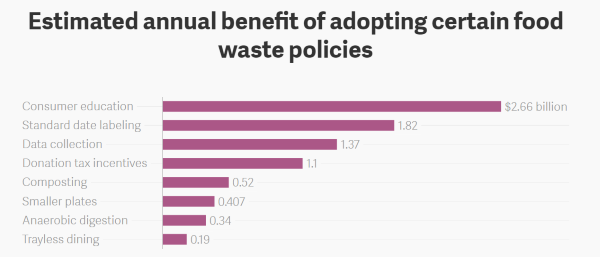
All while food may be getting thrown out because of the label dates, another practice that can prevent even more food waste is food donations. There are approximately 37.2 million people in the United States who live in households with food insecurity and 14.3 million households suffering from food insecurity (Why Hunger). These are people who often have to skip meals, eat less, or feed their children but not themselves. These people who are not economically stable can be provided food from donations to reduce the amount of economic loss from tossing food away into landfills.
However, there is a dilemma when speaking about label dates. To what extent or how far are these labels going to push until the food is guaranteed still good for consumption? While it is important to reduce food waste by changing labels, the dates also play a crucial role. The government and industries producing labels cannot neglect the safety of the consumers as well.
Behavioral attitudes/practices: Social aspect of Food Waste
When talking about behavioral attitudes, ethical issues arise because there are many questions to ask and answer. For instance, who should be sacrificing (changing behaviors), and who is benefiting? According to a case study in the Netherlands, food waste is produced from households more than any other sectors or area (Dooren, 2020). In the Netherlands, a popular dish was rice and pasta. However, these two were found to have the most wasted food in their proportions. Roughly 34% of the rice was wasted while 23% of the pasta was wasted (Dooren, 2020). In response to the levels of rice and pasta being wasted yearly, the Netherlands Nutrition Centre developed Eetaatje, a measuring cup used to weigh dry rice and pasta (Dooren, 2020). The intent behind this invention was to develop a way for the people to properly measure their food consumption so as to not waste anymore rice and pasta specifically. The study dove into the behavioral attitudes and practices that gave way into reducing food waste. A four country study revealed that households reporting less food waste levels practiced five food practices: planning of shopping and planning of meal preparation, exclusion of impulse buying, management of stocks and fridge, cooking the right quantities, and being creative with leftovers (Geffen, 2016).
Fig. 3. Consumer waste model including various roles of motivation, opportunity and ability in determining food waste levels. Source: Geffen (2016).
Figure 3 organizes the ideas and thought-process that runs behind consumer food management and the influences that will overall affect food waste levels in households. The Netherlands Nutrition Centre was successful in reducing food waste, partially because they made the Eetaatje free of charge and distributed it to people who purchased two bags of rice, and the people who received the Eetaatje used it.
Increasing education on food waste can be an effective way to change consumer behaviors and lower levels of food waste. Consumers are an important target as their levels of food waste are much higher than any other step in the food supply chain, so this is where food waste can be reduced the most (Gunders, 2012). Consumers have a bad habit of overbuying and unrealistically accessing how much food they may need which leads them to tossing a lot of the food out. Teaching consumers to shop wisely, use lists, and avoid overbuying seems very simple but can go a long way in reducing food waste. Many groceries have promotions that encourage volume purchases, which may be less expensive per ounce, but if the food purchased goes bad before consumption it may be more expensive to the consumer. The distribution of this education can be done in the retail environment, and some grocers in the U.K. have added important information for consumers to produce bags, and on in-store displays (Gunders 2012).
It is also important to note that many consumers lack knowledge, skills, and behaviors related to food preparation. Often times, people will throw out food when it is spoiled or when the food looks unappealing (Van Der Werf 2019). This is because they lack the education to properly care for food. It is very crucial to have good meal prepping habits and management. Furthermore, some people have certain diets and selectively yearn for some foods and neglect other foods. For example, if someone were to not like eating too many beans and only some, then they might toss out some beans after eating a few because of their taste. These are all habits of poor food literacy in the consumer household.
In addition to poor food literacy, there are many social demographic factors that affect food waste. Age is a very big determining factor behind food waste as well. Children and infants tend to waste more food compared to the elderly who waste less food (Van Der Werf 2019). Age also determines responsibility. Older folks in the mid 30s and older may have better food literacy knowledge and better food care habits compared to the younger generations (Van Der Werf 2019). Household sizes are also a factor that determines how much food waste comes from one household. A larger family will definitely produce more food waste than a smaller family (Van Der Werf 2019). On top of this, eating habits is also a factor behind food waste. There is a big difference between a fussy eater and a slower eater. Some people tend to eat outside of the house while some people tend to eat inside the house. However on the other side, it is also important to note that people may buy more food in some cases because they are preparing for unexpected situations. While they are preparing for the expected, they also must prepare for the unexpected as well. Therefore, these various factors that affect food waste in the household do not explain every situation.
Case Study: Europe vs United States
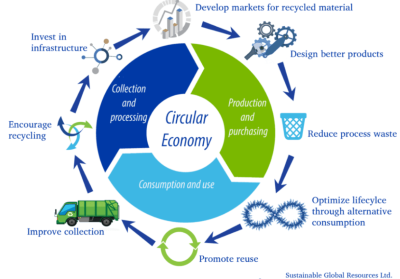

Despite the fact that Europe is reaching critical levels in food waste, the United States is still the global leader in food waste, discarding roughly 40 million tons of food yearly (RTS). It is estimated that a single person wastes 219 pounds of waste. As a result, the US Department of Agriculture (USDA) and the US Environmental Protection Agency (EPA) set a goal in 2015 to reduce half of the food waste by 2030 (RTS). This eventually led to Congress passing the Food Recovery Act of 2017 (H.R.3444, 2017). The law essentially combated food waste at several levels. At the consumer level, labels were fixed as well to require only “Sell by” dates. It also encouraged schools to purchase lower priced “ugly” fruits and vegetables and expanded grant programs that can push to educate students on food recovery and food waste (ReFED). The act also encouraged composting as a practice under the USDA’s conservative programs and provided more support to farmers to increase food anaerobic digestion projects (ReFED). The act directed the USDA to research new technologies that could increase shelf life of fresh food and required the USDA to set a standard for how to estimate food waste at the farm level (ReFED). Furthermore, some states like California, Connecticut, Massachusetts, Rhode Island, and Vermont have passed laws to restrict the amount of food waste going into landfills (RTS). California, Colorado, and Massachusetts also have a pending legislation that would establish programs that would fund private sector composting and organic collection programs (RTS).
Limitations
Limitation: The format for reporting data in Europe on food waste has been updated to obtain better quality statistics. However, we were not able to obtain these statistics because the Member States are currently collecting data on food waste and will not present the statistics until mid 2022.
Limitation: The United States is not Europe and Europe is not the United States. What may work in Europe may possibly only work in Europe. The United States is one nation while Europe is a continent with many nations and different cultures from the United States.
Conclusions
After this analysis, it is evident that food waste is detrimental to the planet through landfill pollution, climate change, and global warming. Food waste will only continue to become an even bigger issue over the years. It is important that we begin combating food waste by amending poor practices that help contribute to food waste and putting in place legislation that works to improve data on food waste and develop new technology and new practices that can deal with food waste. Furthermore, food waste holds economic cost that could be translated into better uses. Future research to dive into is spreading word of food waste and identifying efficiency of food waste consumer education.
Badgett, A., & Milbrandt, A. (2020). A summary of standards and practices for wet waste streams used in waste-to-energy technologies in the United States. Renewable and Sustainable Energy Reviews, 117, 109425. doi: 10.1016/j.rser.2019.109425
Cicatiello, C., & Franco, S. (2020). Disclosure and assessment of unrecorded food waste at retail stores. Journal of Retailing and Consumer Services, 52, 101932. doi: 10.1016/j.jretconser.2019.101932
Davenport, M. L., Qi, D., & Roe, B. E. (2019). Food-related routines, product characteristics, and household food waste in the United States: A refrigerator-based pilot study. Resources, Conservation and Recycling, 150, 104440.
Dooren, C. V., Mensink, F., Eversteijn, K., & Schrijnen, M. (2020). Development and Evaluation of the Eetmaatje Measuring Cup for Rice and Pasta as an Intervention to Reduce Food Waste. Frontiers in Nutrition, 6. doi: 10.3389/fnut.2019.00197
Food Waste in America in 2020: Statistics & Facts: RTS. (n.d.). Retrieved April 18, 2020, from https://www.rts.com/resources/guides/food-waste-america/
Gunders, D. (2012). Wasted: How America Is Losing Up to 40 Percent of its Food from Farm to Fork to Landfill. Retrieved from https://www.nrdc.org/sites/default/files/wasted-food-IP.pdf
Just the Facts About Hunger in the US & The World. (n.d.). Retrieved April 11, 2020, from https://whyhunger.org/just-the-facts/
Lucifero, N. (2016). Food Loss and Waste in the EU Law between Sustainability of Well-being and the Implications on Food System and on Environment. Agriculture and Agricultural Science Procedia, 8, 282–289. doi: 10.1016/j.aaspro.2016.02.022
Moraes, C. C. D., Costa, F. H. D. O., Pereira, C. R., Silva, A. L. D., & Delai, I. (2020). Retail food waste: mapping causes and reduction practices. Journal of Cleaner Production, 256, 120124. doi: 10.1016/j.jclepro.2020.120124
Muth, M. K., Birney, C., Cuéllar, A., Finn, S. M., Freeman, M., Galloway, J. N., ... & Meyer, E. (2019). A systems approach to assessing environmental and economic effects of food loss and waste interventions in the United States. Science of the Total Environment, 685, 1240-1254.
Ng, H. S., Kee, P. E., Yim, H. S., Chen, P.-T., Wei, Y.-H., & Lan, J. C.-W. (2020). Recent advances on the sustainable approaches for conversion and reutilization of food wastes to valuable bioproducts. Bioresource Technology, 302, 122889. doi: 10.1016/j.biortech.2020.122889
Press corner. (n.d.). Retrieved April 18, 2020, from https://ec.europa.eu/commission/presscorner/detail/en/QANDA_19_6706
Sharma, P., Gaur, V. K., Kim, S.-H., & Pandey, A. (2020). Microbial strategies for bio-transforming food waste into resources. Bioresource Technology, 299, 122580. doi: 10.1016/j.biortech.2019.122580
Sheppard, P., Garcia-Garcia, G., Stone, J., & Rahimifard, S. (2020). A complete decision-support infrastructure for food waste valorisation. Journal of Cleaner Production, 247, 119608. doi: 10.1016/j.jclepro.2019.119608
Spiker, M. L., Hiza, H. A., Siddiqi, S. M., & Neff, R. A. (2017). Wasted food, wasted nutrients: nutrient loss from wasted food in the United States and comparison to gaps in dietary intake. Journal of the Academy of Nutrition and Dietetics, 117(7), 1031-1040.
Werf, P., Seabrook, J., & Gilliland, J. (2019, March 18). Food for naught: Using the theory of planned behaviour to better understand household food wasting behaviour. Retrieved April 11, 2020, from https://onlinelibrary.wiley.com/doi/full/10.1111/cag.12519
www.fao.org. (n.d.). Retrieved March 24, 2020, from http://www.fao.org/3/a-bb144e.pdf
Acknowledgements
This project would not have been successful without the contributions of the outstanding students in our Food Systems, Sustainability, and Climate Change class. We would particularly like to acknowledge the wonderful and challenging questions, and the specific knowledge that students with different areas of expertise provided.
About the Authors
Jin Soo Park is an undergraduate studying Biochemistry, Biology, and Molecular Biology at UW Madison. Jin Soo can speak up to five different languages and has been living overseas away from his homeland South Korea for about 8 years now.
Zac Thao is an undergraduate studying Microbiology at UW Madison. An interesting fact about him is that he enjoys playing a lot of volleyball.
Ryan Wenzel is an undergraduate majoring in Food Science at UW Madison. Ryan grew up on a farm in Wisconsin, where he raised sheep and pigs.

